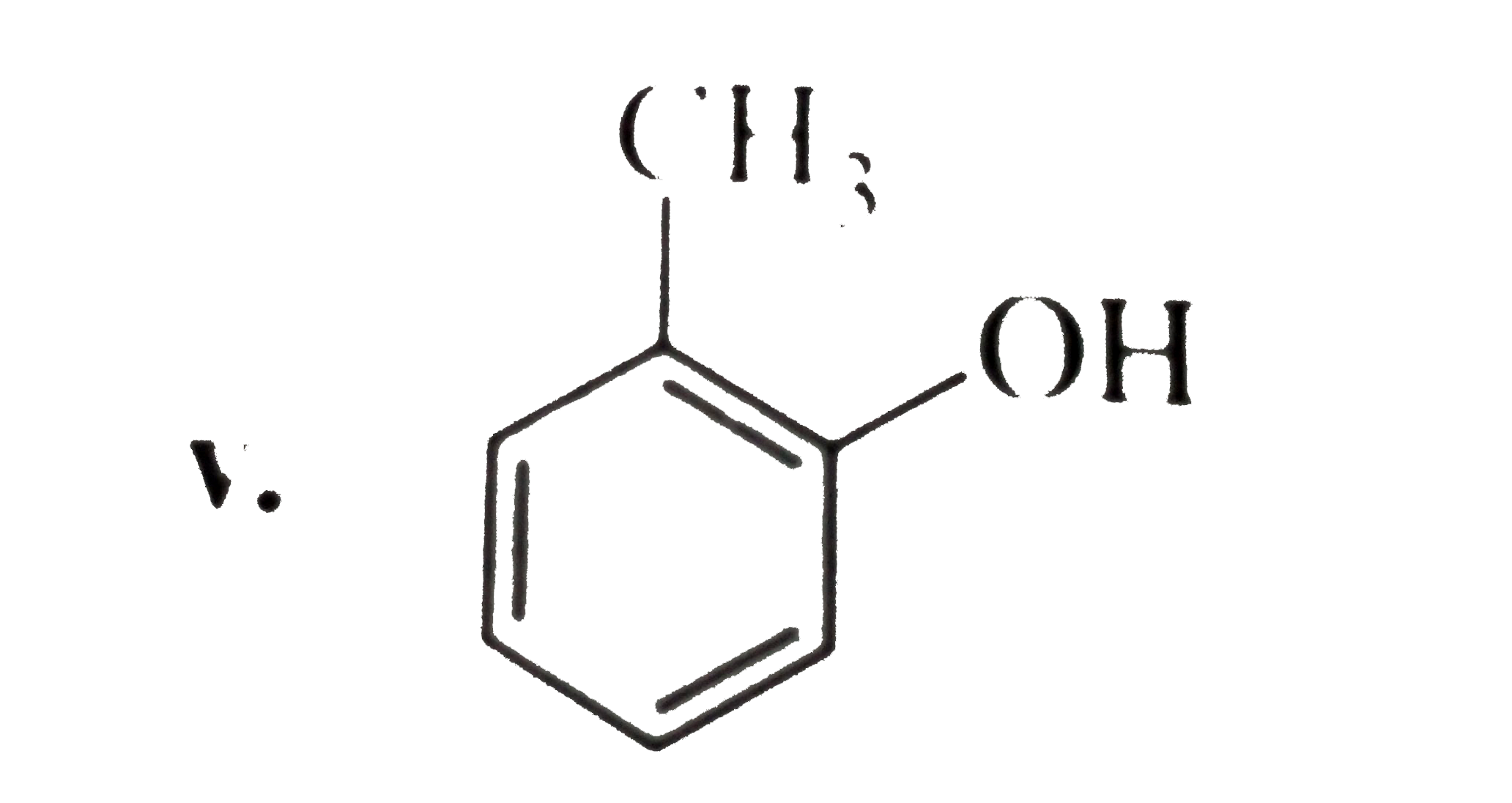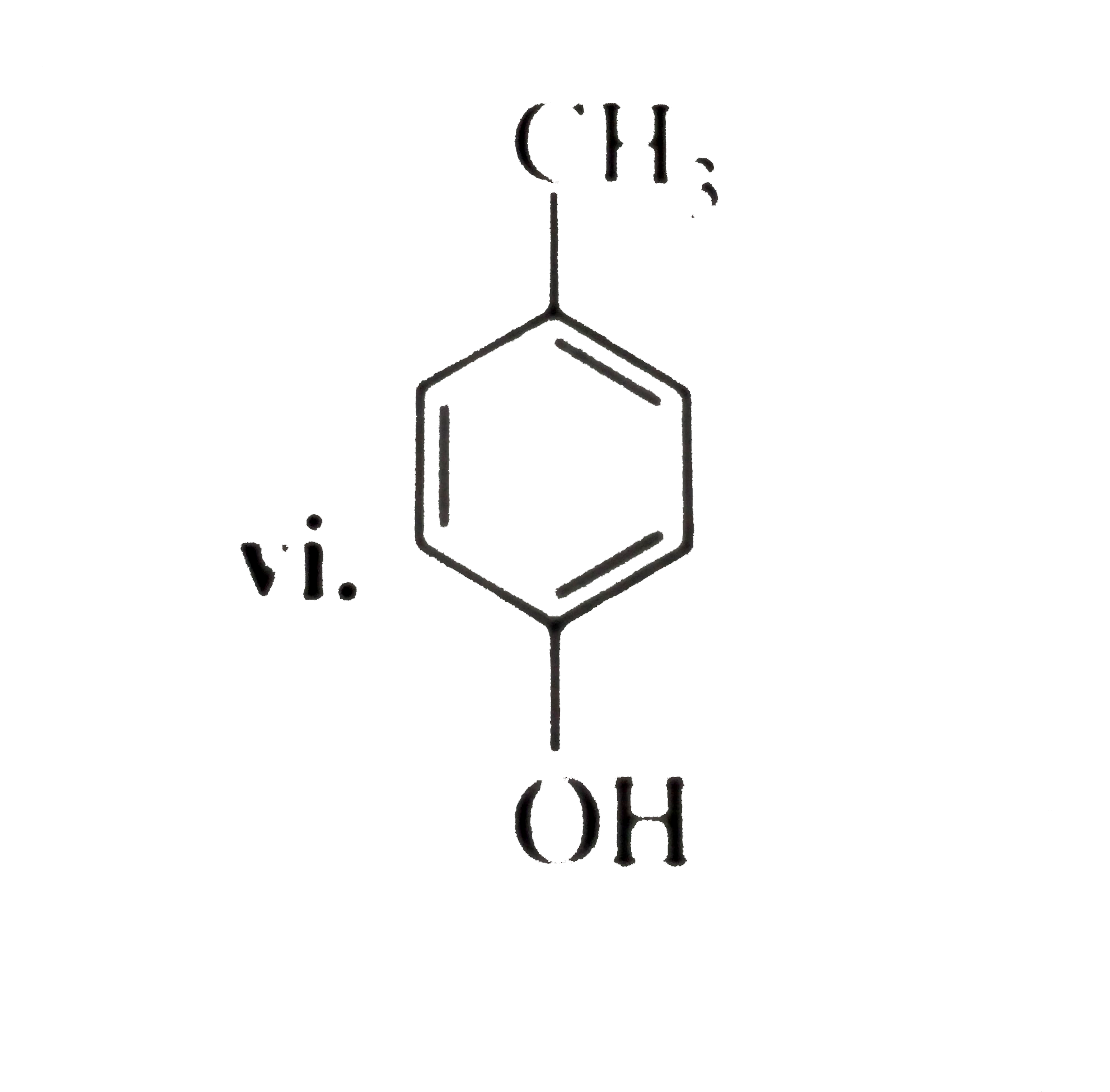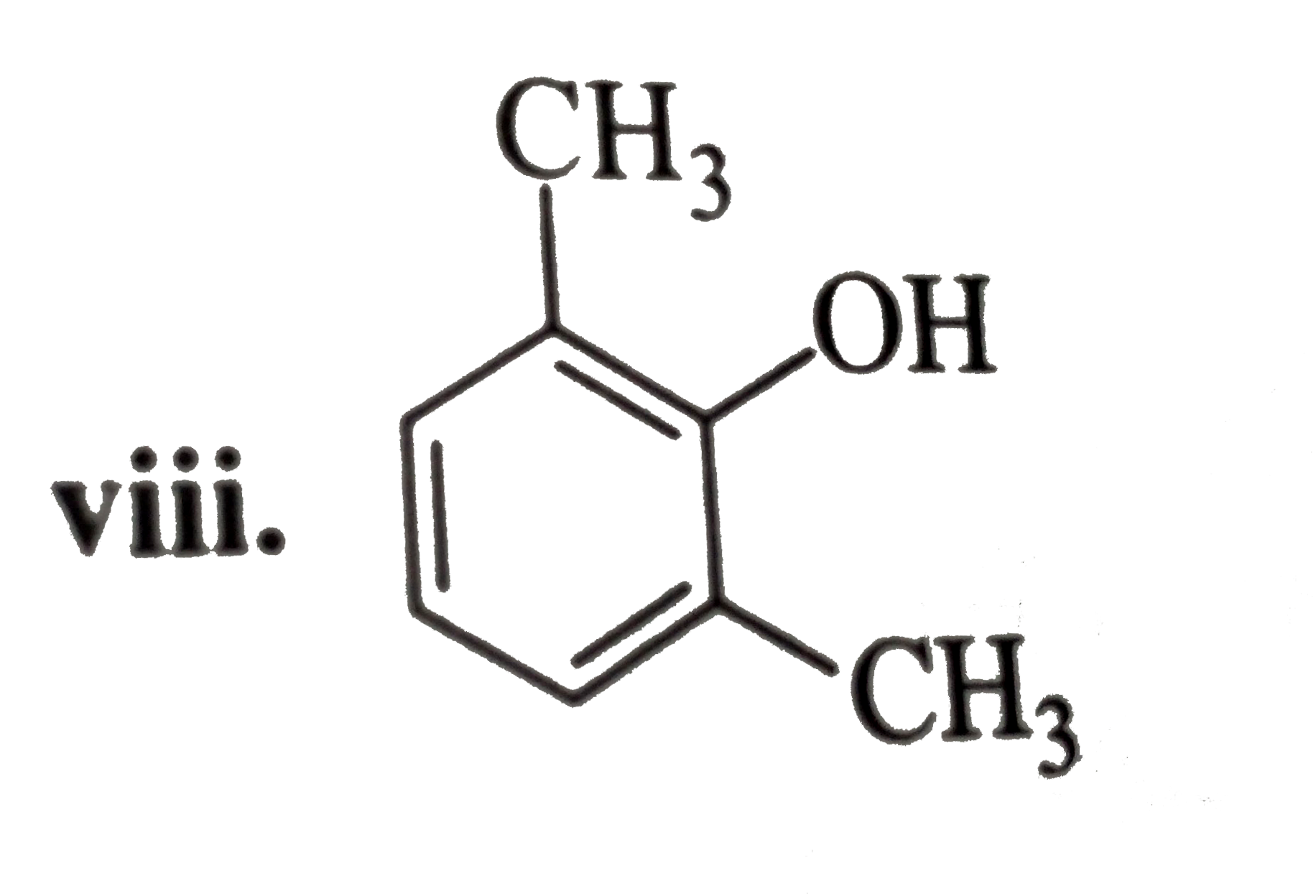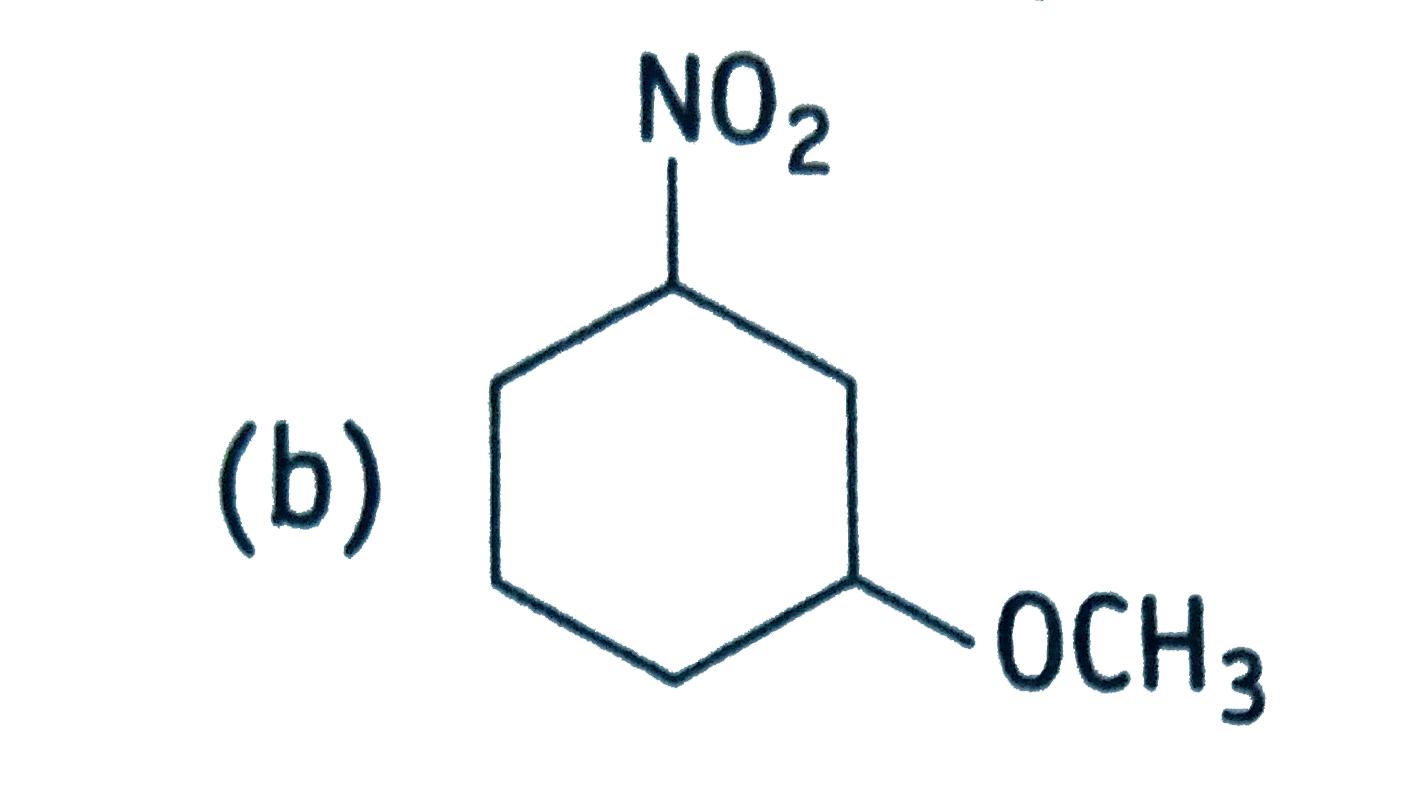C∣OHH(2)−C∣∣O−C∣OHH−C∣OHH2HlO4−−→ products
Products are:
HCHO
HCOOH
CO2
OHC−CHO
To solve the problem of what products are formed when the compound with the structure CH2OH-CH(OH)-C(=O)-CH(OH)-CH2OH is reacted with HIO4, we will follow these steps:
1. Identify the Structure:
The compound has a chain of carbon atoms with hydroxyl (OH) groups attached. It can be recognized as a vicinal diol (1,2-diol) due to the presence of adjacent hydroxyl groups.
2. Understand the Reaction with HIO4:
HIO4 (periodic acid) is known to cleave vicinal diols into aldehydes and/or ketones. The reaction involves breaking the C-C bond between the two carbons that are part of the diol.
3. First Cleavage:
When the first equivalent of HIO4 is added, it cleaves the first vicinal diol, resulting in the formation of an aldehyde and a carboxylic acid. The structure will change to:
- HCHO (formaldehyde)
- HCOOH (formic acid)
- The remaining part of the molecule will still have hydroxyl groups.
4. Second Cleavage:
The remaining vicinal diol will undergo a second cleavage with another equivalent of HIO4. This will again yield an aldehyde and a carboxylic acid. The products from this step will include:
- Another molecule of HCHO (formaldehyde)
- HCOOH (formic acid)
5. Final Products:
After all cleavages are accounted for, the final products from the reaction with HIO4 will be:
- HCHO (formaldehyde)
- HCOOH (formic acid)
- CO2 (carbon dioxide) from the complete oxidation of the remaining carbon structure.
Summary of Products:
The products formed from the reaction of the given compound with HIO4 are:
- HCHO (formaldehyde)
- HCOOH (formic acid)
- CO2 (carbon dioxide)
The compound has a chain of carbon atoms with hydroxyl (OH) groups attached. It can be recognized as a vicinal diol (1,2-diol) due to the presence of adjacent hydroxyl groups.
HIO4 (periodic acid) is known to cleave vicinal diols into aldehydes and/or ketones. The reaction involves breaking the C-C bond between the two carbons that are part of the diol.
When the first equivalent of HIO4 is added, it cleaves the first vicinal diol, resulting in the formation of an aldehyde and a carboxylic acid. The structure will change to:
- HCHO (formaldehyde)
- HCOOH (formic acid)
- The remaining part of the molecule will still have hydroxyl groups.
The remaining vicinal diol will undergo a second cleavage with another equivalent of HIO4. This will again yield an aldehyde and a carboxylic acid. The products from this step will include:
- Another molecule of HCHO (formaldehyde)
- HCOOH (formic acid)
After all cleavages are accounted for, the final products from the reaction with HIO4 will be:
- HCHO (formaldehyde)
- HCOOH (formic acid)
- CO2 (carbon dioxide) from the complete oxidation of the remaining carbon structure.
The products formed from the reaction of the given compound with HIO4 are:
- HCHO (formaldehyde)
- HCOOH (formic acid)
- CO2 (carbon dioxide)
Similar Questions
Knowledge Check
The IUPAC name of CH3−C∣OHH−C∣CH3H−C∣OHH−CH3∣C∣CH3−CH3 is
A3, 5, 5-Trimethylhexane-2, 4-diolB2, 2, 4-Trimethylhexane-3, 5-diolC1, 2, 4, 4-Tetramethylpantane-1, 3-diolD2, 2, 4, 5-Tetramethylpantane-3, 5-diolThe IUPAC name of CH3−C∣CH3H−C∣OHH−C∣OHH−CHO is
A2, 3-Dihydroxy-4-methylpentanalB1-oxo-2, 3-Dihydroxy-4-methylpentaneC2,3-Dihydroxy-4-methylpentanoneD1, 2-Dihydroxy-3-methylbutanecarbaldehyde
The IUPAC name the compound
CH3−CH∣OH−CH∣OH−CH2∣OH is
View SolutionWrite IUPAC names of the following compounds:
i. CH3−CH∣CH3−CH∣OH−CH3∣C∣CH3−CH3
ii. H3C−C∣OHH−CH2−C∣OHH−C∣C2H5H−CH2−CH3
iii. CH3−C∣OHH−C∣OHH−CH3
iv. HO−CH2−C∣OHH−CH2−OH
v. vi.
vi. 
vii. viii.
viii. 
ix. CH3−O−CH2−C∣CH3HCH3
x. C6H5−O−C2H5
xi. C6H5−O−C7H15(n−−−)
xii. CH3−CH2−O−C∣CH3H−CH2−CH3
View SolutionWrite the IUPAC name of the following compounds.
(a) CH3−CH∣CH3−CH∣OH−CH∣C2H5−CH∣OH−CH3
(b)
View SolutionWhich of the following will be oxidised by HIO4?
(A) R−C∣∣O−C∣∣O−R
(B) R−C∣∣O−CH| OH−R
(C) R−CH−CH2−CH−R | | OH OH
(D) R−CH−CH−R | | OH OH
View SolutionWhen pinacol is treated with dilute H2SO4, a re-arangement reaction takes place which leads to the formation of a ketone.
CH3−OH∣C∣CH3−OHC∣CH3−CH3H2SO4−−−→CH3−O∣∣C∣CH3−CH3∣C−CH5
This reaction involves re-arrangement of carbocation
Step 1:
_S01_409_Q01.png)
CH3−OH∣C∣CH3−+OH2∣CCH3−CH2→CH3−OH∣C∣CH3−OH∣C∣CH3−+C∣CH3−CH3
Step 2:
Carbocation rearrange by hydride, alkyl shift to get as stable as they can. Stability is the driving force for re-arrangement migration of bond may also oC Cur. Where by ring expansion and ring contraction takes place. The relief of strain can provide a powerful driving force for re-arrangement.
_S01_409_Q02.png)
_S01_409_Q03.png)
What will be the product of following reaction
_S01_409_Q04.png)
R is:
View SolutionWhen pinacol is treated with dilute H2SO4, a re-arangement reaction takes place which leads to the formation of a ketone.
CH3−OH∣C∣CH3−OHC∣CH3−CH3H2SO4−−−→CH3−O∣∣C∣CH3−CH3∣C−CH5
This reaction involves re-arrangement of carbocation
Step 1:
_S01_411_Q01.png)
CH3−OH∣C∣CH3−+OH2∣CCH3−CH2→CH3−OH∣C∣CH3−OH∣C∣CH3−+C∣CH3−CH3
Step 2:
Carbocation rearrange by hydride, alkyl shift to get as stable as they can. Stability is the driving force for re-arrangement migration of bond may also oC Cur. Where by ring expansion and ring contraction takes place. The relief of strain can provide a powerful driving force for re-arrangement.
_S01_411_Q02.png)
_S01_411_Q03.png)
What will be the product of following reaction_S01_411_Q04.png)
View Solution
